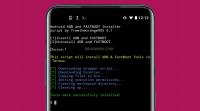7 Places to Use ADB Commands Other Than an Android Device
-
Android Debug Bridge (ADB) is a powerful command line tool that lets you interact with an Android device. You can use ADB to access your device from your computer for testing and debugging purposes. In this blog post, we’ll cover 10 places where the ADB commands come in handy outside of an Android device. You can use these ADB commands to debug apps on your computer instead of directly accessing them on your phone. Nulls Brawl For example, you might want to test an app without having to run it on a real device every time you make a change. Instead, you could connect the app directly to your computer and debug it there instead of keeping it on your phone all the time and connecting it back whenever you need to test or debug something. Let’s take a look at 10 useful places where using ADB is helpful and how you can integrate them into your development workflow.
Windows and OS X Command Line
If you’ve used ADB commands on an Android device before, you know that they’re primarily meant to be executed on the device. However, you can also use ADB on your computer by first installing an ADB client. Windows users can download the standalone ADB client Utility for Windows, while OS X users can use the built-in terminal utility. Once you have ADB installed, you can execute the same ADB commands on your computer as you do on your Android device. This is particularly useful if you need to debug something that only happens on the device, such as sending a text message to a specific contact.
Continuous Integration Tools
As a developer, you likely use tools like Jenkins and Travis to perform continuous integration and automated testing on your code. These tools support running ADB commands on your code by letting you specify them in a Build or Test phase. You can use this functionality to run automated tests or interact with a connected device. For example, if you’re testing an app that connects to an API, you can use ADB to send a POST request to that API and check the response on your computer instead of having to send the request from an Android device.
BrowserStack
BrowserStack is a service for cross-browser testing and debugging. Using BrowserStack, you can run a headless Chrome browser on your computer and use ADB commands to simulate a real Android device. This is useful if you want to do things like test your app’s performance or check how it renders on a different device.
Chrome DevTools
Chrome DevTools is a powerful set of developer tools that lets you debug and inspect elements on a web page. You can use the Remote Debugging feature of DevTools to debug a website from your computer using ADB commands. This is particularly helpful when you want to debug an app that runs on the web, such as a Progressive Web App (PWA). PWA apps are meant to work even when the device doesn’t have the app installed; they’re just hosted on the web.
Firefox Developer Edition
If you’re working on a project that requires debugging JavaScript, you can use Firefox’s built-in Developer Console. One of the features of the Developer Console is the ability to use ADB commands to interact with a device or emulator. This is helpful if you’re testing an app that uses Cordova, Electron, or any other framework that lets you build a PWA.
WebIDE
WebIDE is a Chrome DevTools extension that lets you debug and inspect hybrid apps in a simulated Android device. Using WebIDE, you can issue ADB commands directly from your computer to interact with an Android device that’s connected to your computer via USB. This is useful if you want to debug an app that runs on an Android device.
Cordova/Ionic/Andronite Apps.
Many hybrid app frameworks such as Ionic, Cordova, and Andronite let you create a PWA app that runs on a web-based framework. This is helpful because you can host and distribute the app easily. However, it’s also helpful when you want to debug the app because you can use ADB to interact with the device.
Final Words
ADB is a great way to debug an app and test it on your computer. However, you can’t just use ADB wherever you want because it requires you to have an Android device connected to your computer via USB. You can circumvent this requirement by setting up an ADB server on your computer. You can use ADB commands to communicate with your computer, just like you would when using an Android device. By now, you should know that ADB is a powerful tool, and there are tons of places where you can use it outside of an Android device. So, if you ever need to debug an app, you can use ADB to interact with it on your computer.

